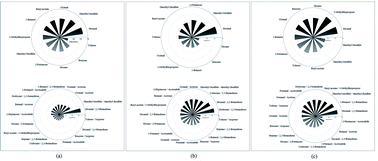Exhaled breath analysis using GC-MS and an electronic nose for lung cancer diagnostics
Abstract
Exhaled breath analysis is an interesting and promising approach for the diagnostics of various diseases. Being non-invasive, convenient and simple, this approach has tremendous potential utility for further translation into clinical practice. In this study, gas chromatography-mass spectrometry (GC-MS) and quartz microbalance sensor-based “electronic nose” were applied for analysis of the exhaled breath of 40 lung cancer patients and 40 healthy individuals. It was found that the electronic nose was unable to distinguish the samples of different groups. However, the application of GC-MS allowed identifying statistically significant differences in compound peak areas and their ratios for investigated groups. Diagnostic models were created using random forest classifier based on peak areas and their ratios with the sensitivity and specificity of peak areas (ratios) of 85.7–96.5% (75.0–93.1%) and 73.3–85.1% (90.0–92.5%) on training data and 63.6–75.0% (72.7–100.0%) and 50.0–69.2% (76.9–84.6%) on test data, respectively. The exhaled breath samples of lung cancer patients and healthy volunteers could be distinguished by GC-MS with the use of individual compounds, but application of their ratios could help to determine specific differences between investigated groups and the level the influence of individual metabolism features alternating from one person to another as well as daily instrument reproducibility deviations. The electronic nose has to be significantly improved to apply it to lung cancer diagnostics of exhaled breath analysis and the influence of water vapour has to be lowered to increase the sensitivity of the sensors to detect lung cancer biomarkers.



 Please wait while we load your content...
Please wait while we load your content...